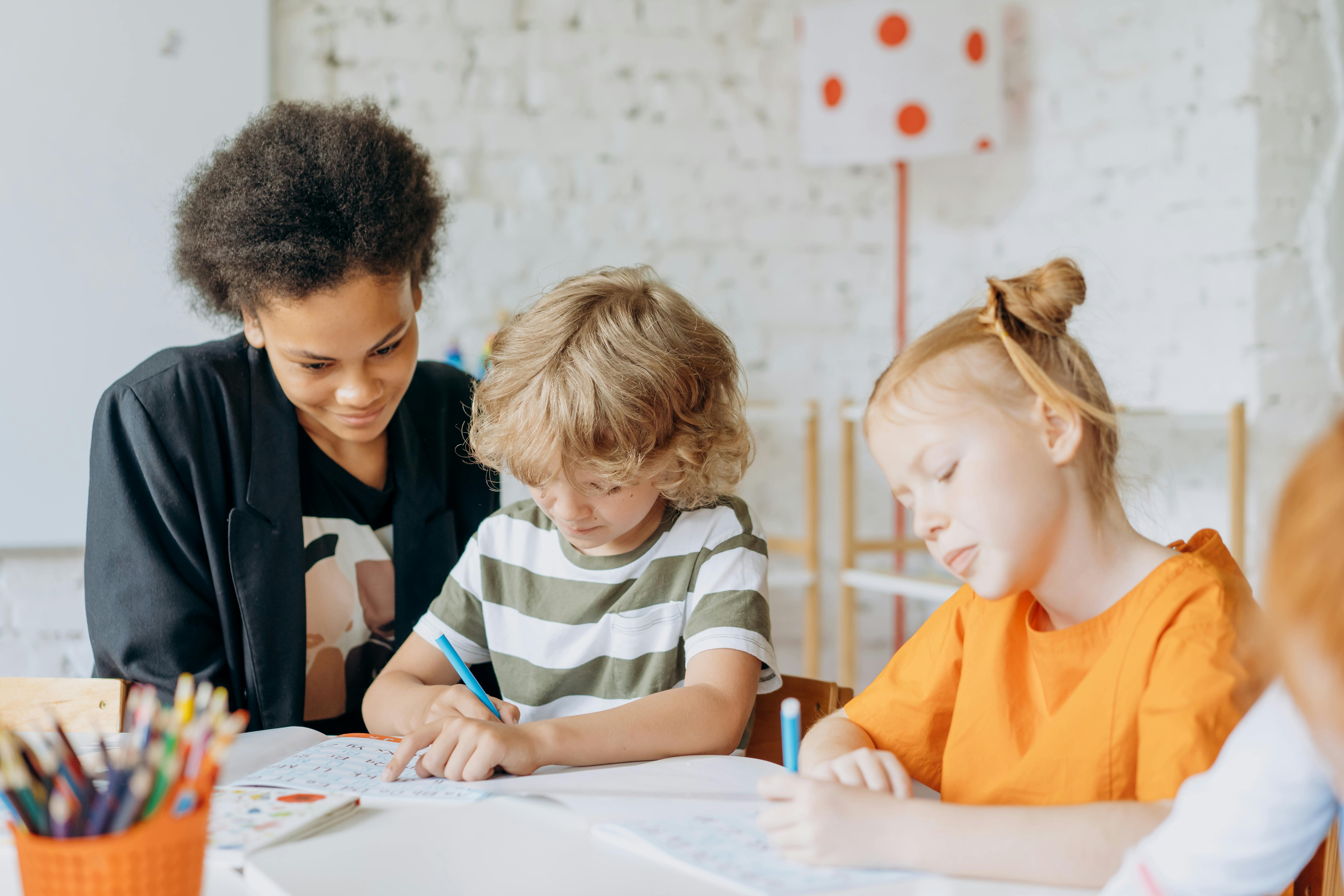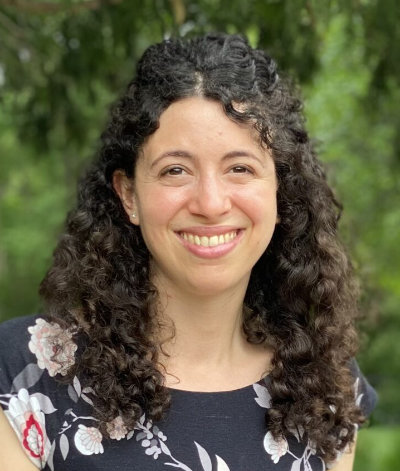
- By Liana Grey
- Tags Preschool Curriculum
- Posted Mar 4, 2024
Preschool Worksheet Alternatives
Children learn best through hands-on experiences, but it can be tempting to sneak worksheets into a preschool curriculum.
I was certainly guilty of this when I taught at a cooperative preschool in Michigan several years ago, and parents asked if I could incorporate alphabet worksheets into the daily routine.
I started each morning with letter-tracing printouts, when I should have encouraged children to spell their names with playdough or write letters in sand.
Here are five alternatives to traditional preschool worksheets that combine writing and math practice with sensory activities, and prove that little ones can learn their letters and numbers without printouts.
Multisensory Experiences
I asked Liz Buehler, a friend of mine that teaches kindergarten at a public school, to share her favorite hands-on activities for teaching early writing skills.
“I really loved doing stations, especially fine motor ones that allowed for creativity, i.e. playdough and tools, sand table, and loose parts,” she said. “It seemed like a way better option than worksheets that weren’t developmentally appropriate.”
Sensory Writing: Go on a nature walk, and model how to draw letters, numbers, or shapes in the dirt with a stick. Part of the fun is collecting the sticks, so make sure to save some for building and sorting later on. With a little imagination, anything can be an outdoor writing tool. During my weekly family enrichment class, a child used a rake to write words along a nature trail, forming huge letters to record what we saw along the way: bench, tree, bird. In the classroom, children can write the alphabet in sand or fish letters out of the water table.
Loose Parts: Encourage children to write letters and numbers with beads, pebbles, seeds, and other loose parts. Objects that come in multiple shapes, colors, or sizes, such as buttons, rocks, pinecones, feathers, acorns, and colorful autumn leaves, are ideal for counting and sorting. Provide index cards for children to “write” the color, shape, or size of the objects they are sorting, and the number in each pile. For best results, have the children collect loose parts from nature themselves.
Allie Dawson, an early childhood educator who taught at a public school and now works at a nature-based preschool, uses ice cube trays for sorting and counting acorns, rocks, berries, and other natural items. “For younger students I use the tray to teach 1:1 correspondence as students can add one of something to each space in the tray,” she told me. “As students gain skills, they can work on putting 2 items in each section to count by 2s, 5 items in each section to count by 5s, etc. Creating simple ABAB patterns is also a great way to use the spaces in the ice cube tray."
Science Experiments
Preschool science projects are always exciting: think baking soda and vinegar volcanoes, or floating pumpkins. When connected to hands-on experiments, numbers and letters take on more meaning than they would on a worksheet. Children can record predictions and observations in a science journal, using emergent writing and drawings, or can watch you jot down their ideas on a class chart.
Skittle Rainbow Experiment: Ask children to arrange skittles around plates to form rainbow-like arches. (Other shapes are fine, too.) Have cups of warm water ready to go, and ask children to predict what will happen when they pour water over the skittles. Children can write or draw their predictions in a journal, or you can record their responses on chart paper. After pouring the water, little ones will be delighted to watch the food coloring leach out of the skittles and form a rainbow.
Sinking and Floating: Stock the science interest area with buckets or containers of water, and a variety of objects to test for sinking or floating properties. Children can drop sticks, pebbles, pinecones, leaves, sponges, mini pumpkins, craft sticks, lego pieces, pom poms - anything lying around in the classroom or outdoor learning space - into the water, and record three items that floated, and three items that sank on a graphic organizer.
Class Projects and Games
Whole group lessons should be used sparingly in early childhood classrooms, but they’re a great opportunity to model writing and reading skills, and build class excitement around literacy.
Class Sign-in Sheets: Start each Monday morning with a fun sign-in routine that doubles as a visual attendance chart and helps children practice writing their names. Display chart paper with a simple question, such as: “Do you like vanilla ice cream?” or “Did you play in the snow this weekend?” Add visual cues, and create “Yes” and “No” columns beneath the question. As children arrive in the classroom, ask them to write their name under the column that applies to them.
Class Story: Flip through a wordless picture book (Float by Daniel Miyares or Pancakes For Breakfast by Tommy Di Paulo are great choices) and ask children to come up with a story to go along with the illustrations. As they narrate, record the words on large pieces of paper - so children can watch you write the letters - and create a big book to add to the class library.
Rhyme, Jump, and Clap Game: Ask children to gather on the meeting rug, and explain the rules of the game: the teacher will share two words, and if the words rhyme, everyone should jump up and clap. Start with a very simple rhyming pair, such as “cat, hat,” and record it on chart paper or a dry-erase board, underlining the common letters. Model how to jump up and clap, and encourage the group to follow along. Repeat with other pairs of words, throwing in a few non-rhyming ones. Once children get the hang of the game, they can take turns leading and sharing word pairs with the class. This game is ideal for older preschoolers and kindergarteners.
Recipes
Cooking is the ultimate sensory learning experience, and one of my favorite ways to teach math, science, social studies, and literacy. It’s certainly not as tidy as crayons and worksheets - your classroom floors will be covered in flour and sticky dough will get just about everywhere - but the mess is worth it. What better way to teach letters and numbers than by following, or writing, a recipe?
Thumbprint cookies: Find a simple jam-filled thumbprint cookie recipe, then make it child-friendly: write and illustrate the ingredient list and directions on a large piece of chart paper, or design a recipe on the computer and laminate multiple copies, so that individual children can follow along. Children will enjoy pressing their thumbs into the dough, and choosing a jam filling. Be sure to explain that every child’s fingerprints are unique - as are their preferences for different flavors of jam.
Class Cookbook: Ask a parent volunteer to teach children how to prepare a favorite family snack, baked good, or simple meal. Afterwards, give children the opportunity to write and illustrate their own favorite recipes. Scan, print, and staple copies to send home. If your budget allows, use a local printing service to publish spiral-bound cookbook copies, and organize a multicultural potluck for families.
Writing at Every Interest Area
Don’t confine writing tools to the literacy center. Place paper and crayons or pencils everywhere in the classroom, and watch the creative juices flow. While teaching outdoors last spring, some of my students made a sign for a veterinarian clinic specializing in polar bears! It may take a little teacher prompting, modeling, and assistance to get the crayons to paper, so here are some ideas to get children started.
Street Signs: Place pieces of paper and crayons in the block center. Children can write the names of streets - local or imaginary. For inspiration, display laminated photos of local landmarks, such as a train station, bridge, or library.
Menus: If children express interest in restaurants, turn the dramatic play area into a bakery or cafe. One child can operate a toy cash register and count the money. Others can write and illustrate menus for the “customers.”
Business Names: When children create a pretend store, restaurant, or doctor’s office, encourage them to name the business and write a sign.
About Jovial
Jovial offers high-quality preschool management software — at no charge — to all non-profits and smaller for-profits.
About JovialRelated Posts
-
Preschool Worksheet Alternatives
Mar 4, 2024 / Preschool CurriculumChildren learn best through hands-on experiences, but it can be tempting to sneak worksheets into a preschool curriculum ...
-
"Daycare" vs. "Preschool"
Oct 25, 2022 / Preschool Admin Preschool CurriculumAt daycares and preschools alike, you'll find children singing at circle time, building with blocks, learning to share ...
-
Preschool Curriculum Guide
Oct 18, 2022 / Preschool CurriculumThis guide will help you design a preschool curriculum and daily routine that accomplishes the goal of any high quality ...
-
Types of Preschools
Aug 30, 2022 / Preschool CurriculumTypes of preschools; whether Reggio Emilia, Montessori, Cooperative, Nature-based, or a combination, choosing the right ...
